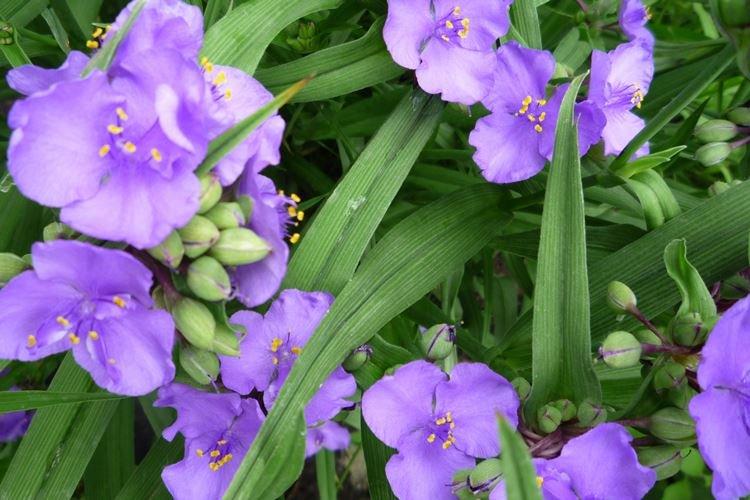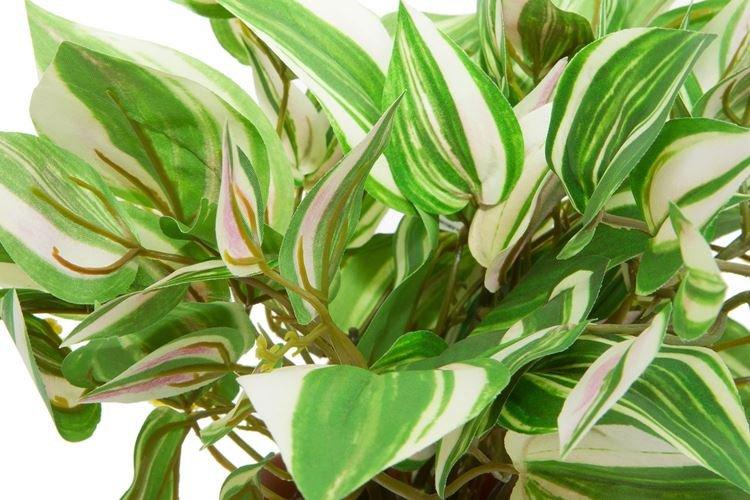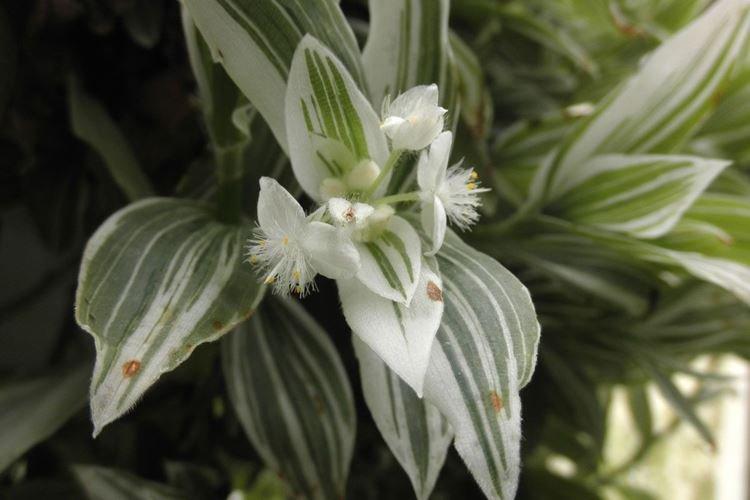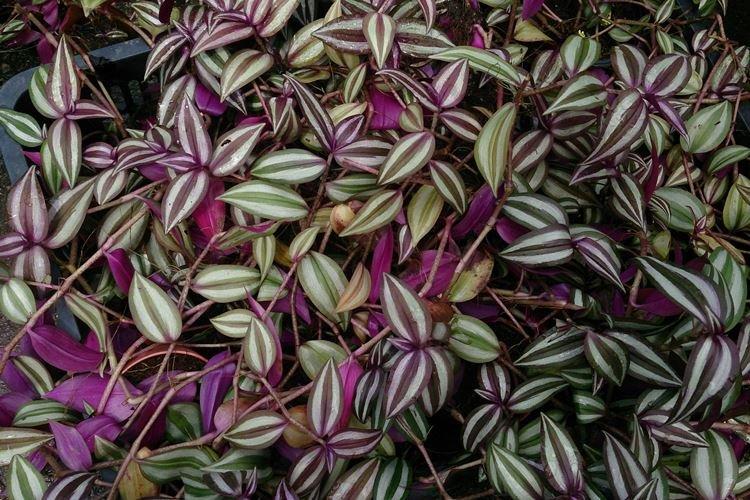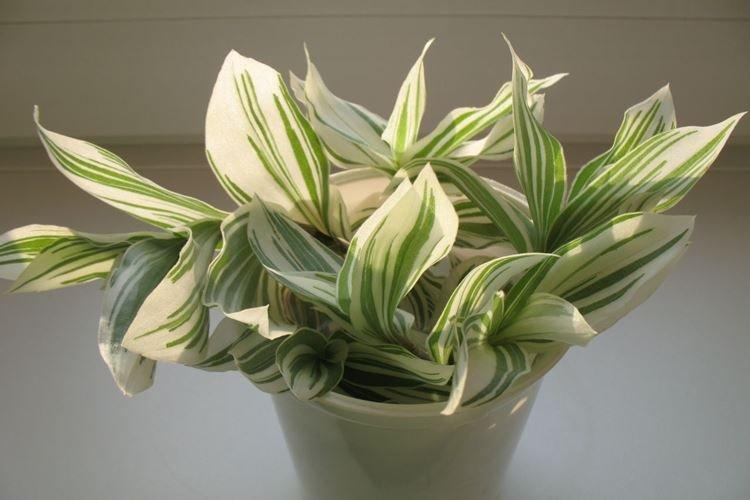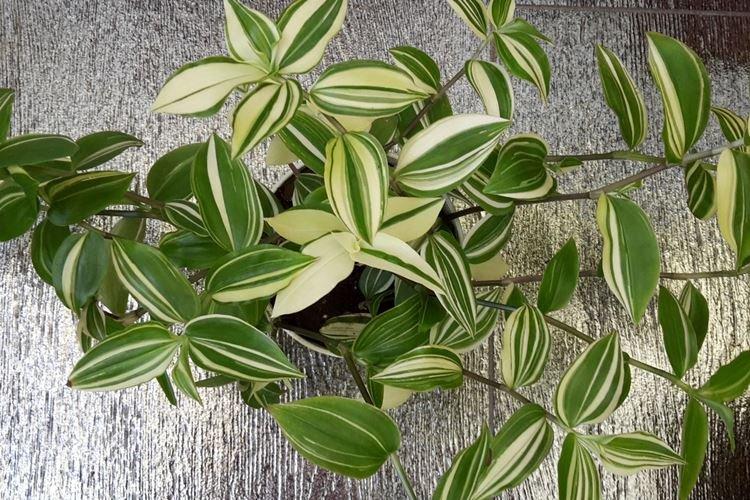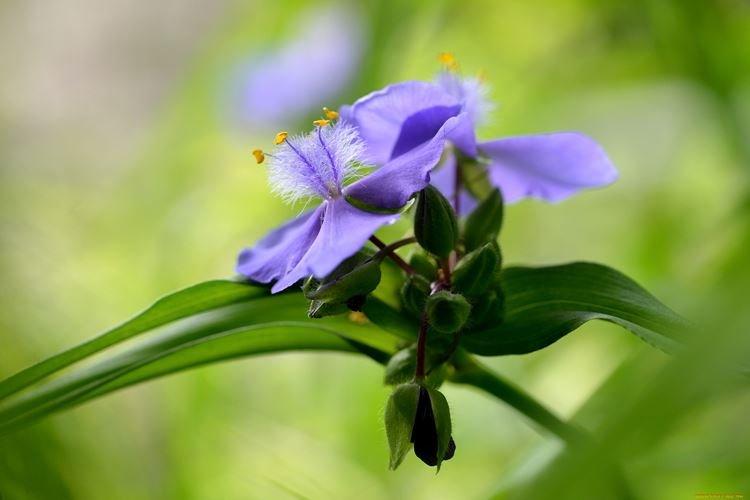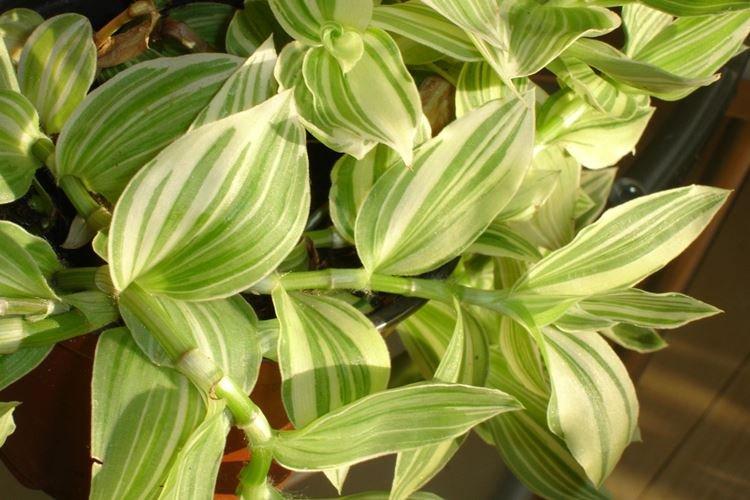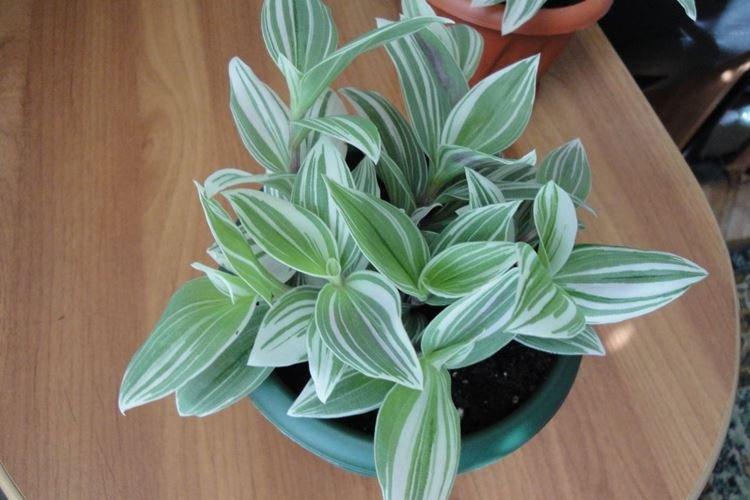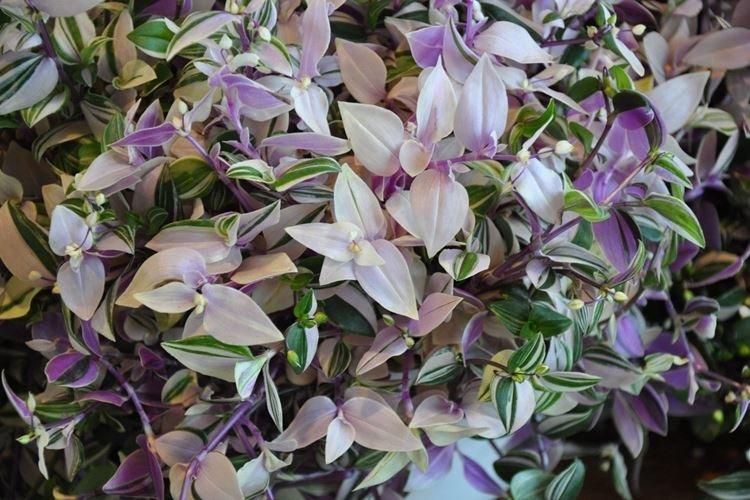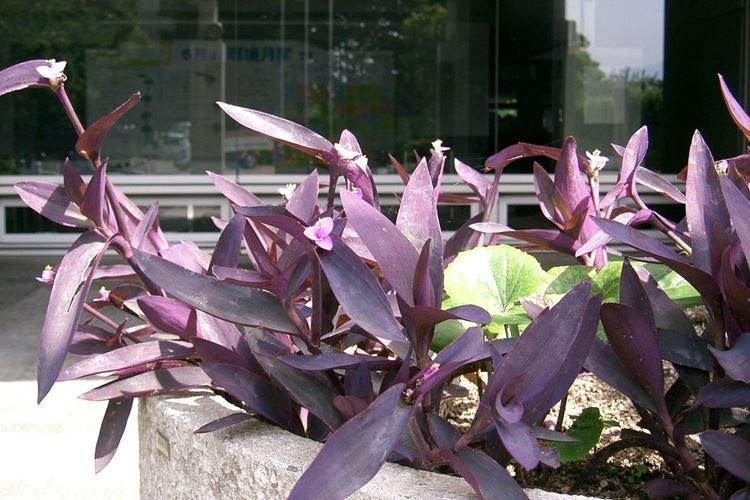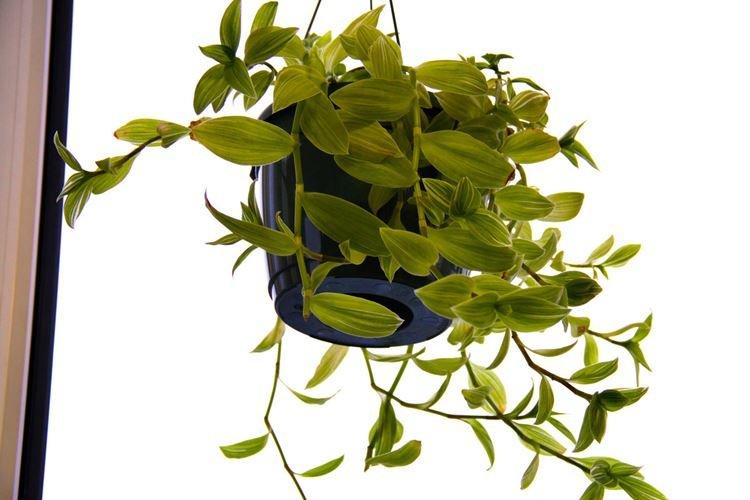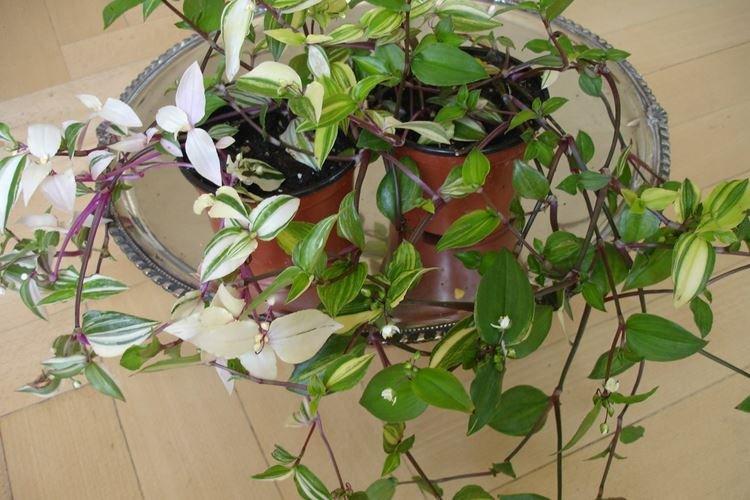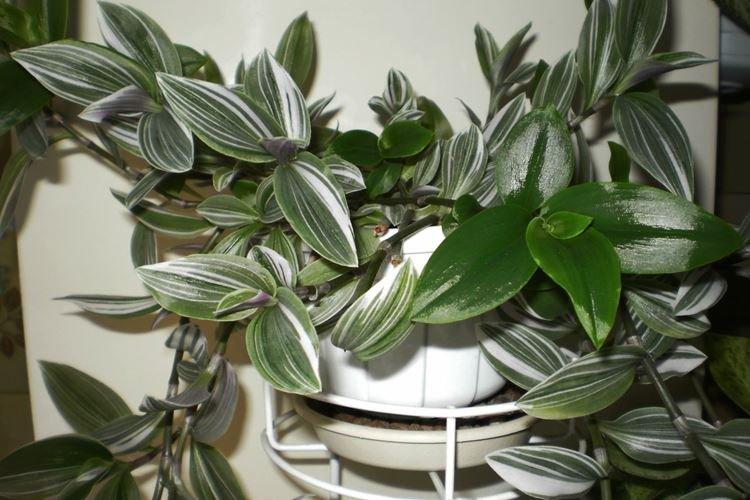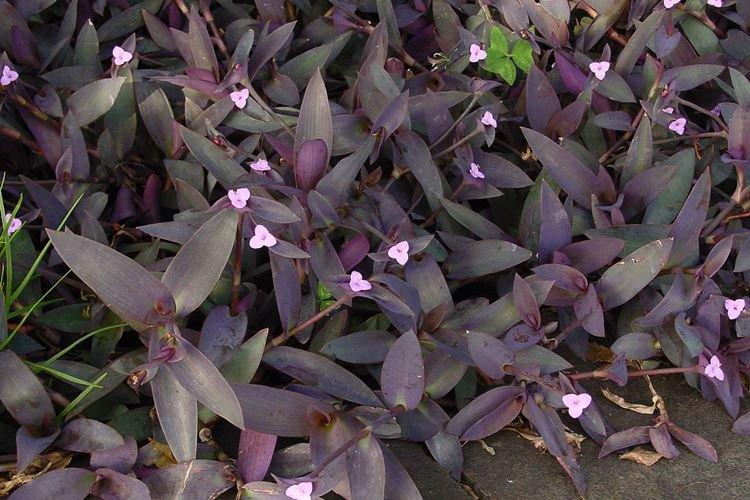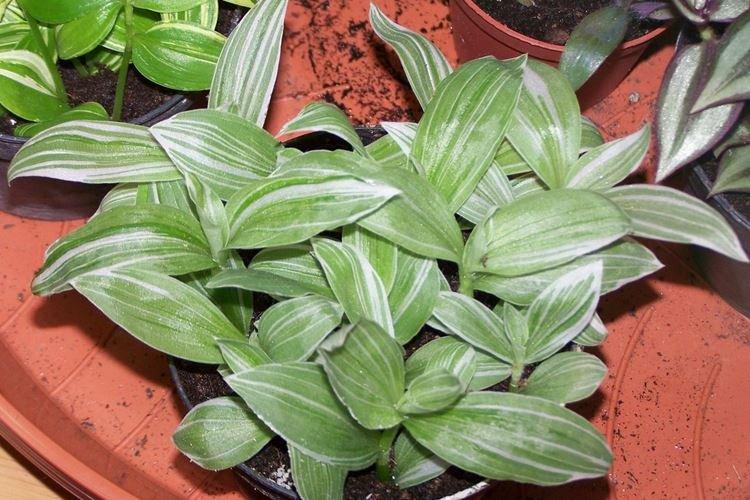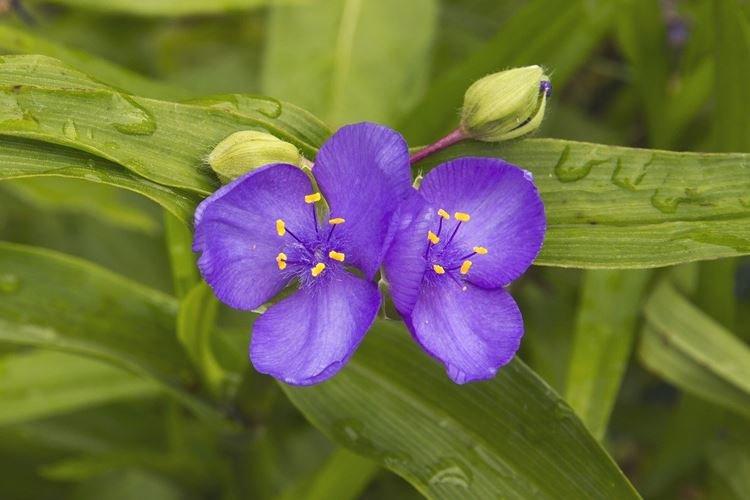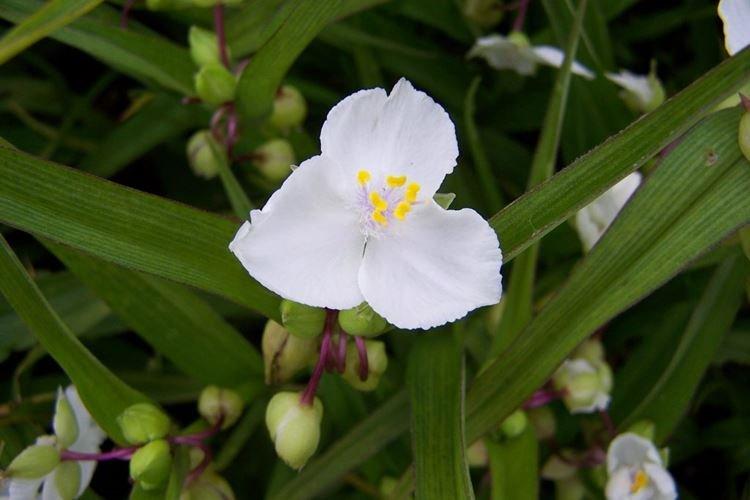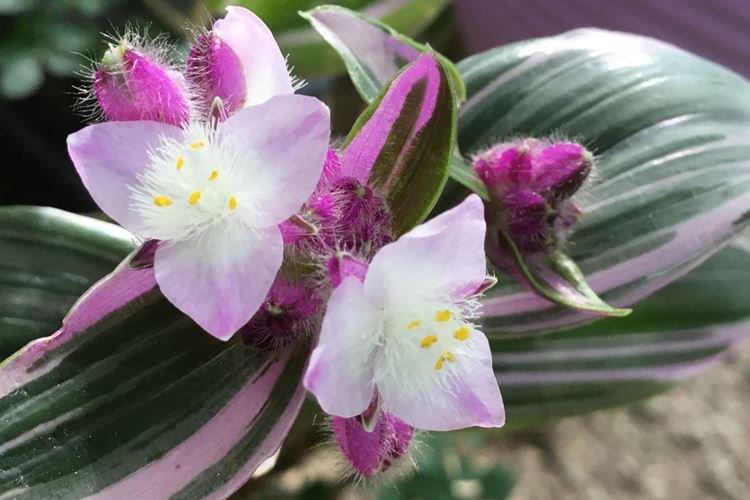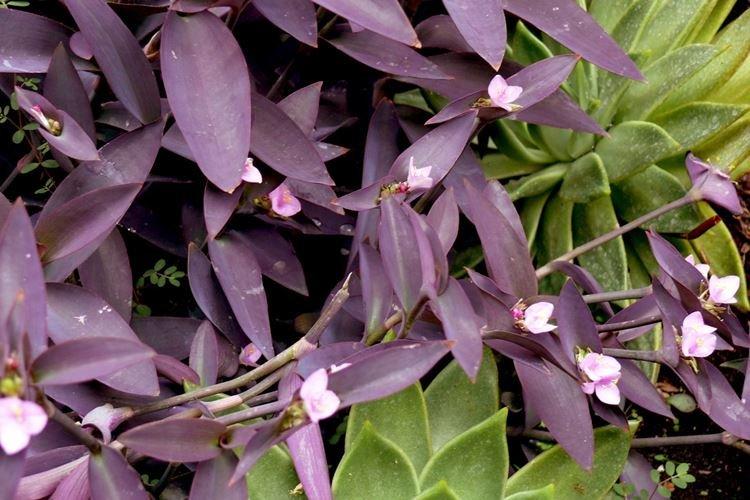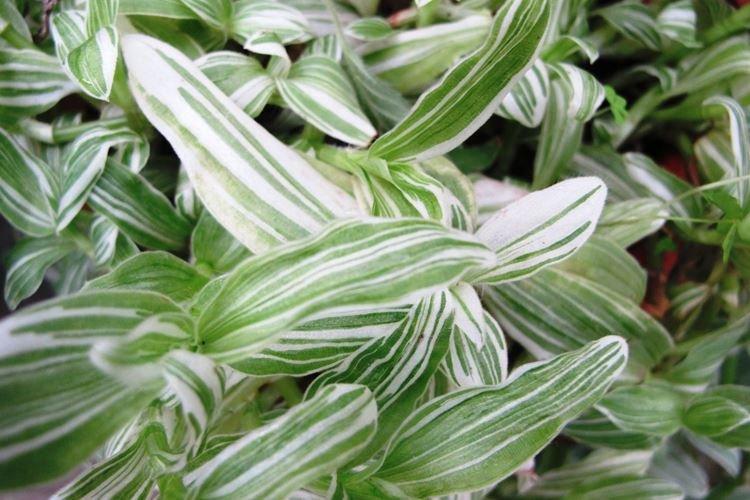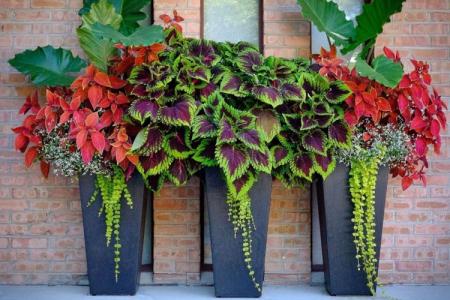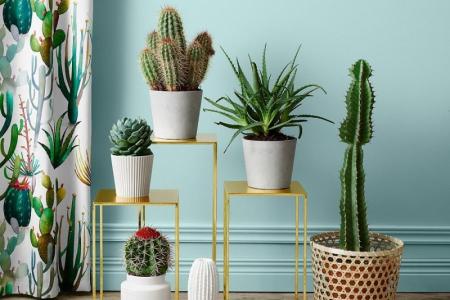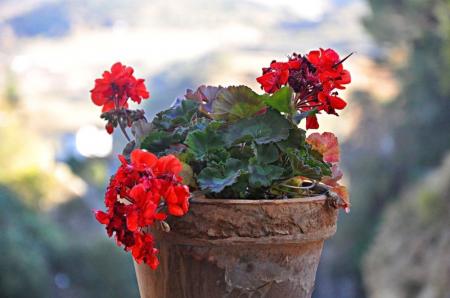
The green corner will be much more interesting and varied if you dilute it with beautiful variegated leaves. They don't even need to bloom, because they are spectacular on their own all year round. Today we will tell you about Tradescantia, the variety of its types and features of care! An unusual plant can be planted in flowerpots or a garden!
general information
Tradescantia got its fancy name in honor of John Tradescant, the gardener of the English king Charles I. For strength, endurance and ability to break through in any conditions, the people called it "saxifrage". It belongs to the commeline family - herbaceous varieties from the temperate and tropical latitudes of America.
Tradescantia is good for its unusual leaves, the shape of which differs from species to species. Street varieties are grown near water bodies, along with ferns, astilbe or daylilies. At home, this is an ampelous plant that looks delightful in a flower pot. Especially - vines with slightly elongated multi-colored leaves.
At home, Tradescantia feels great on high shelves, freely falling out of the flowerpot. Although it is appreciated for its decorative foliage, it is quite a flowering plant that is covered with small blue or purple flowers. In the room, it cleans the air, destroys bacteria and extinguishes electromagnetic radiation.
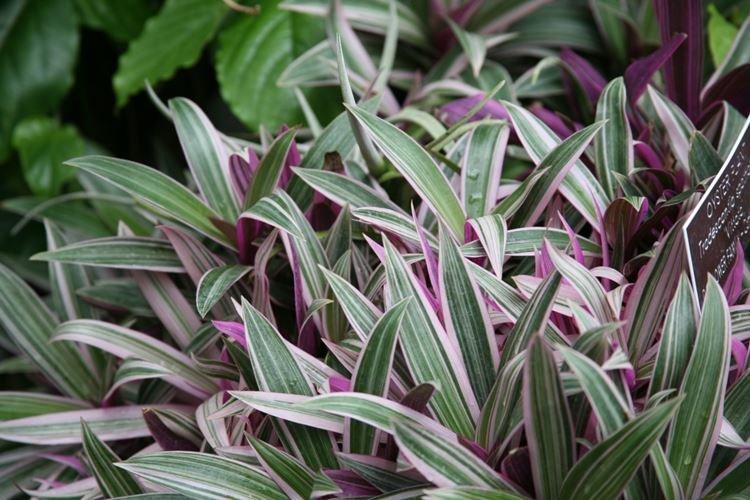
Types of tradescantia
There are over seventy varieties of Tradescantia, and many can be safely grown in flowerpots at home. We are talking about a few of the most popular ones that will delight you with decorative properties, but do not require too complicated care.
Virginian tradescantia
The spectacular look is notable for its long lanceolate leaves and erect shoots. The herbaceous bush grows up to 60 cm, and only the length of the plates can reach 20 cm. Beautiful purple flowers are collected in dense elastic umbrellas.
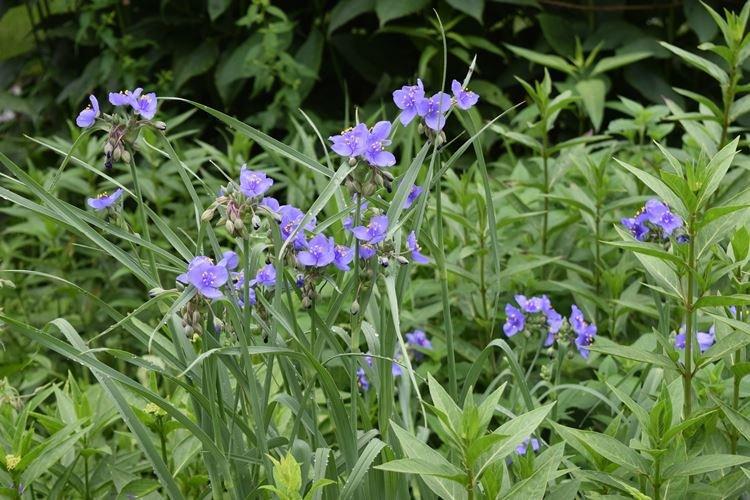
Tradescantia Zebrina
The popular ampelous variety with hanging striped leaves is especially good in hanging flowerpots. The name reflects the peculiarity: the dark green leaves are covered with symmetrical whitish stripes. The purple flowers echo interestingly with the same shade on the back of the plant.
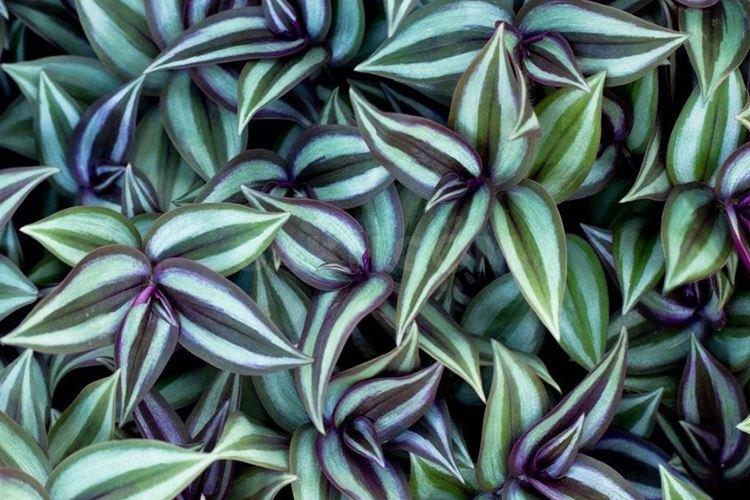
Tradescantia white-flowered
Large oval or ovoid leaf plates up to 6 cm cover long flexible stems. They have a spectacular pointed edge, and against this background delicate white inflorescences look even more interesting. There are monochromatic, striped and variegated varieties: for example, the lilac Tricolor or the yellow-green Aurea.
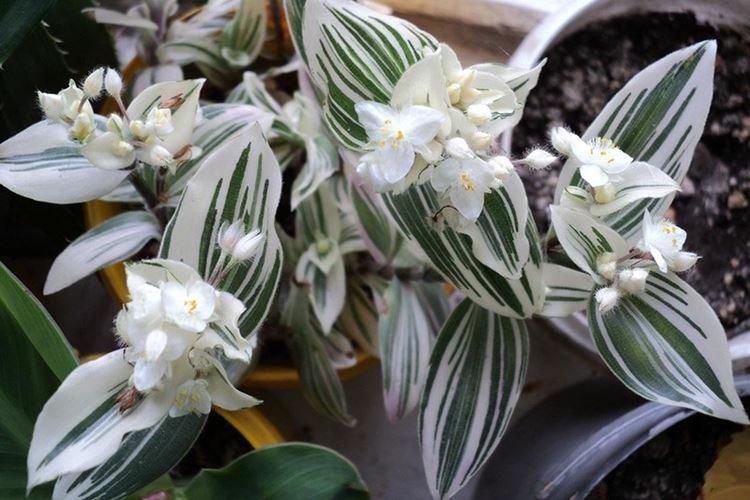
Tradescantia Anderson
It is a popular breeding species with variegated lanceolate leaves and rather large flowers. Under favorable conditions, this tradescantia blooms throughout the summer. Rich blue Iris, purple Leonora and white Osprey look spectacular.
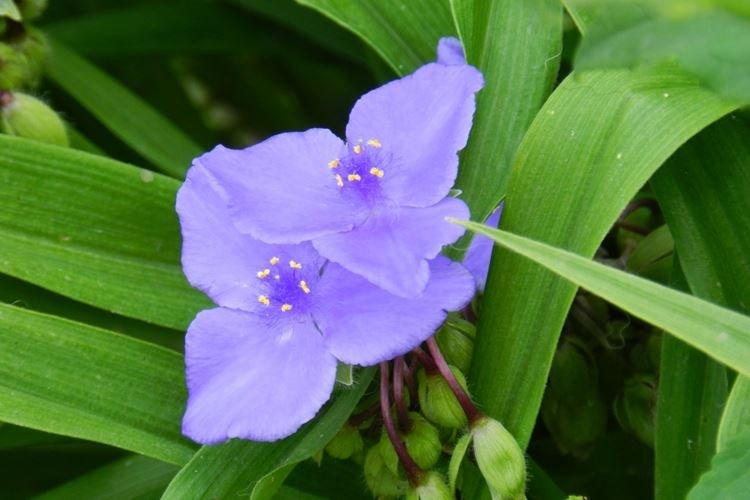
Covered Tradescantia
Short erect stems are surrounded by a dense and elastic rosette of vertical lanceolate leaves. They are bright and glossy, with a green front and purple back. Small snow-white flowers hide as if under a blanket.
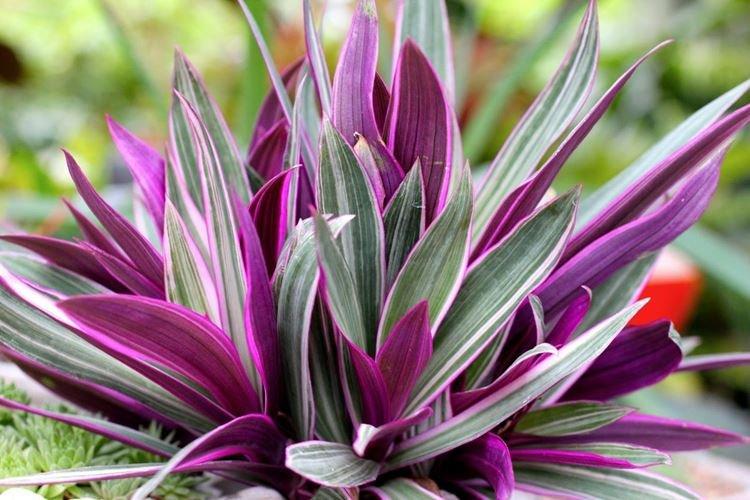
Purple tradescantia
The species is interesting precisely for its rich purple-burgundy color. Shoots can be lodging and erect, and the flowers are the same crimson or pinkish. On the reverse side, the leaves are slightly pubescent, which creates a velvety feeling.

Small-leaved tradescantia
It is an ornamental variety with slender stems and small, compact leaves. In young plants, they barely grow to half a centimeter. The front side is green, bright and smooth, while the back is purple.
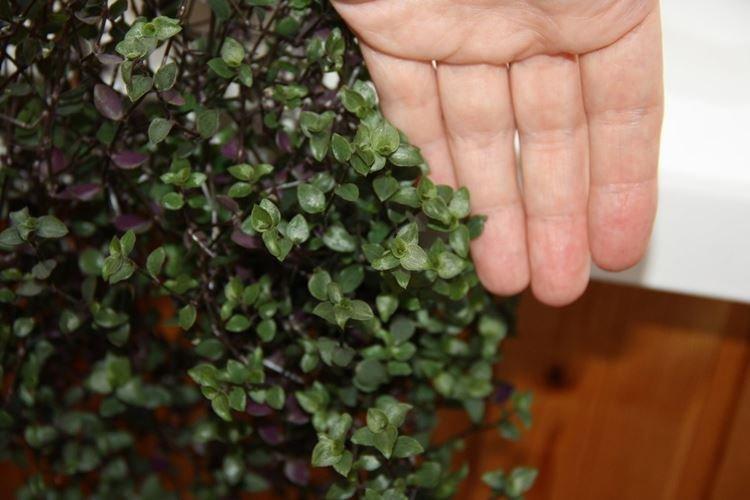
Tradescantia care
Monochromatic tradescantia do not require complex care and hardly get sick. Variegated varieties are a little more capricious, because they can turn green or burn out.Be sure to wash your hands after transplanting or pruning, as Tradescantia juice can be irritating.
Temperature
Tradescantia needs warmth and seasonal temperature differences from summer to winter. Therefore, she feels good in the garden and does not need to be transplanted indoors. In summer, the flower grows well at a temperature of about 25 degrees, so you can keep it by the window at home. But in winter, it is advisable to lower the temperature to 12 degrees so that he regains strength before the new season.
In the garden, Tradescantia is completely unpretentious and resistant to frost. During wintering, the plant is pruned, mulched and covered with spruce branches so that it does not freeze too much. A flowerpot with tradescantia feels good on the windowsill in the apartment, and in the summer it can be taken out to the balcony or outside.

Lighting
Tradescantia loves bright light, but it must be diffused, because direct rays are destructive and lead to burns or burnout. The more variegated the leaves, the more light you need, otherwise they will slowly begin to fade and wither. More monochromatic varieties do well with light shading.

Watering
In the warm season, Tradescantia needs to be watered often and intensively, but not to allow stagnation of water. Therefore, always monitor the condition of the soil, otherwise it may sour from constant dampness. In winter, reduce the frequency to one or two times a week, and during cold wintering, water only after the coma is completely dry.
Tradescantia loves moisture so much that it can even decorate aquariums and ponds. The leaves fall into the water and form a neat green carpet on the surface. Cuttings in water can easily live for months or even a year. In the summer, occasional spraying will not hurt, although this is not necessary.
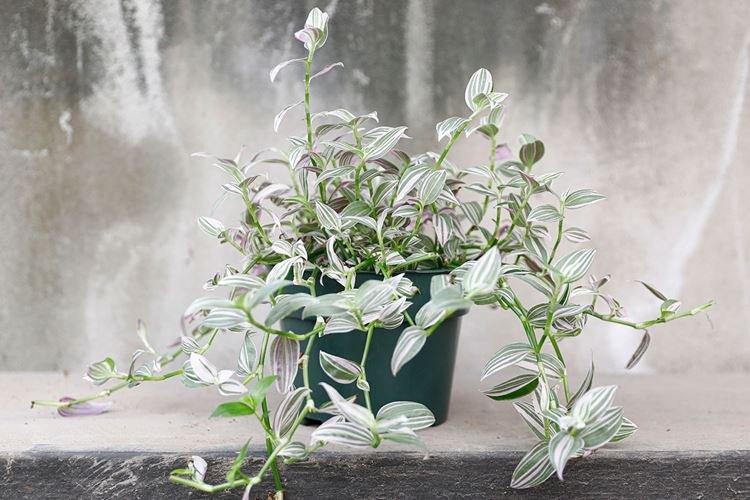
The soil
The store has ready-made soil mixtures specifically for Tradescantia, so you can just take it. If you want to prepare the soil yourself, mix two parts of deciduous and one part sod with humus. Add some sand - about half of the piece.
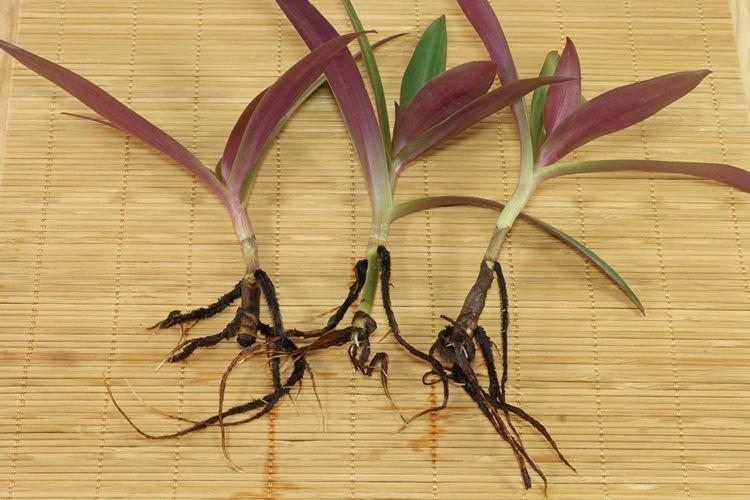
Fertilizers and feeding
During the warmer months, feed Tradescantia once every two weeks. Variegated species do not like organic fertilizers, because they can cause the leaves to turn green. For ordinary people, you can alternate organic matter with mineral mixtures, but be sure to stop feeding in the fall.
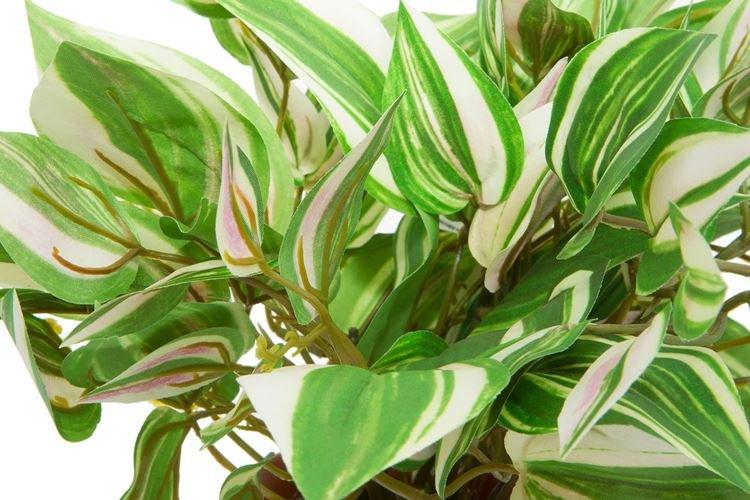
Transplant and reproduction
Young tradescantia are transplanted once a year, but old vines can be transplanted less often. She definitely needs good drainage and a fresh substrate so that the flower grows with renewed vigor. If, after this, Tradescantia still grows poorly, it lacks light or nutrients.
Seeds of Tradescantia are rarely propagated, because it is quite long and troublesome. They need to be disinfected, prepare a special substrate of sand and peat, and after planting, hide under a film. An improvised greenhouse must be constantly ventilated and sprayed.
Cuttings 10-15 cm long can be planted at any time of the year, and five pieces at once in one flowerpot. They take root in a matter of days at a temperature of 15-20 degrees, and after two months they will turn into beautiful decorative bushes. Adult Tradescantia can be propagated by division during transplantation.
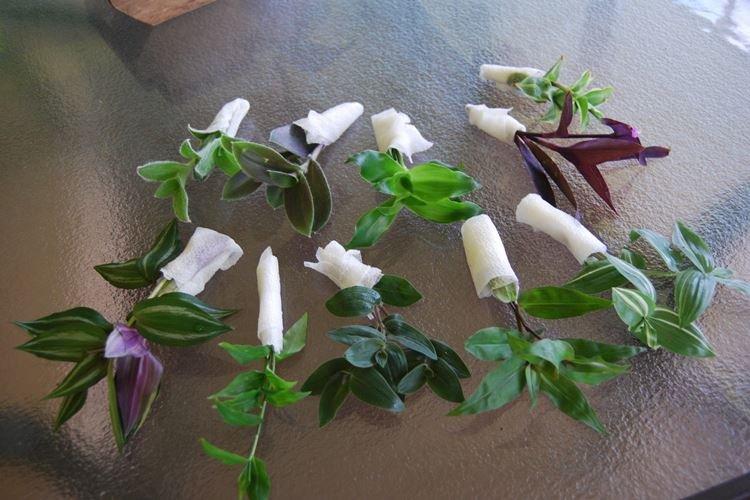
Pruning
Tradescantia is growing rapidly, so it needs to be pruned, thinned and rejuvenated. And so that the shoots are not exposed, you need to pinch it periodically. Once a year, in addition to transplanting into fresh soil, light sanitary pruning is needed.
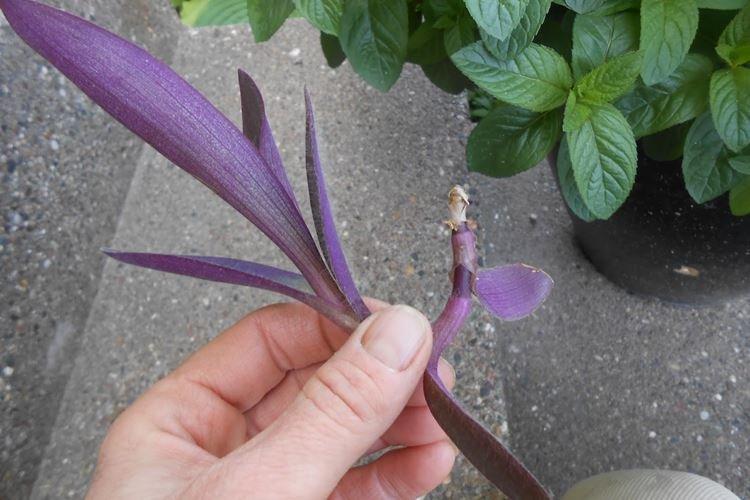
Pest and disease control
The most common problem when growing Tradescantia is root rot due to waterlogged soil. Its development is affected by too dense and heavy soil or high temperature. In this case, the plant needs to be transplanted urgently. If the rhizome is too damaged, it is better to cut the healthy shoots separately and plant them in new flowerpots.
Deformation and loss of color in the leaves may indicate aphids. Another pest that loves variegated tradescantia is the scale insect.If the room is too hot and dry, spider mites may appear. They are fought with the help of an alcohol solution, laundry soap or special insecticides.
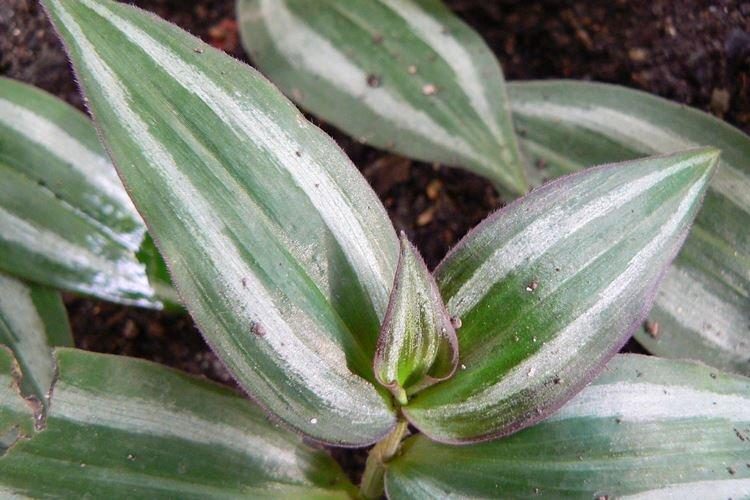
Tradescantia - photo
Tradescantia attracts with its unusual and graceful beauty. To demonstrate this even more clearly, we have prepared a large selection of photos for you!


